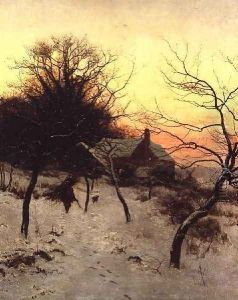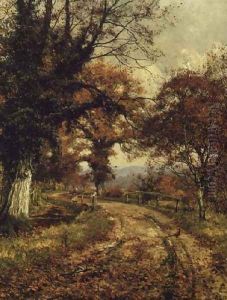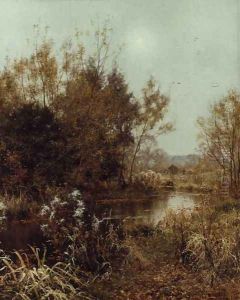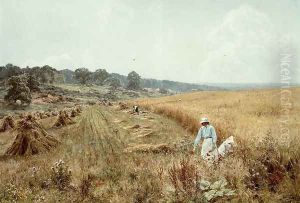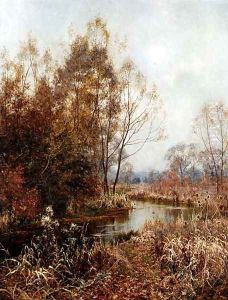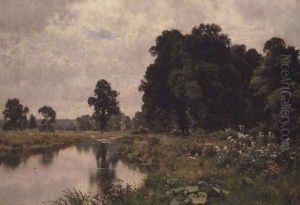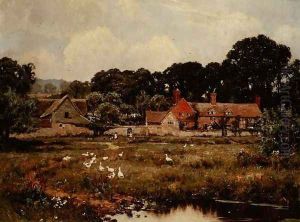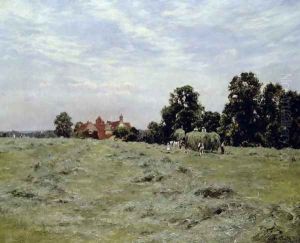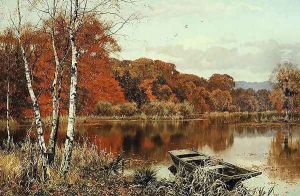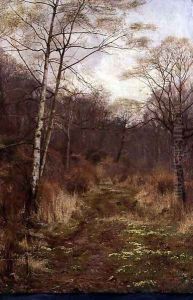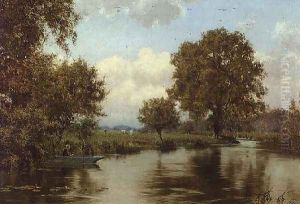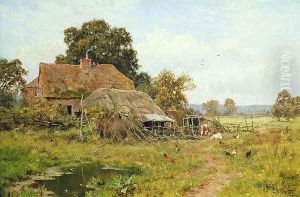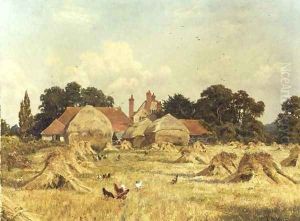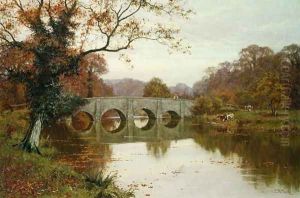Edward Wilkins Waite Paintings
Edward Wilkins Waite was an English landscape painter born in Leatherhead, Surrey, in 1854. His early life was rooted in Surrey, where he developed a deep connection with the English countryside, which would profoundly influence his artistic work throughout his career. Waite received his artistic training at the South Kensington School of Art, which later became the Royal College of Art. His education there equipped him with the skills and techniques that he would later apply to his landscape paintings.
Following his formal education, Waite spent considerable time traveling and painting in the Netherlands, a period which further honed his skills and exposed him to different artistic influences. His travels were pivotal in shaping his approach to landscape painting, as he absorbed elements of the Dutch landscape tradition.
Waite was known for his detailed and realistic landscapes, often depicting scenes of Surrey and the surrounding areas. He had a particular affinity for capturing the lush, rolling hills, and the changing British seasons, from the blooming of spring to the golden hues of autumn. His works often reflected a serene and pastoral England, untouched by industrialization, evoking a sense of nostalgia and peace.
Throughout his career, Waite exhibited his works extensively, including at prestigious institutions such as the Royal Academy of Arts. His paintings were well-received, and he gained a reputation for his skill in rendering the English landscape with a delicate and precise hand.
Edward Wilkins Waite continued to paint and exhibit his work until his death in 1924. His legacy is that of a dedicated artist who captured the essence of the English countryside with a romantic and detailed eye. Today, his paintings can be found in various art collections and continue to be appreciated for their beauty and historical value, providing a window into the rural English landscape of the late 19th and early 20th centuries.










